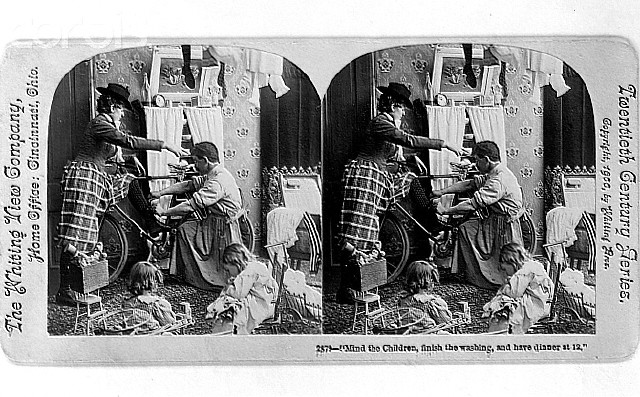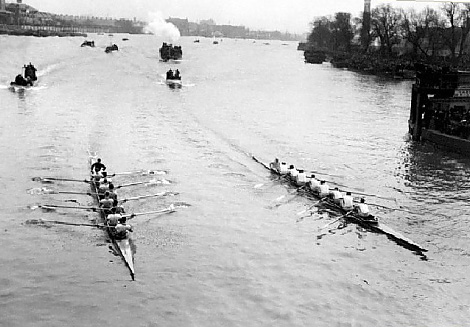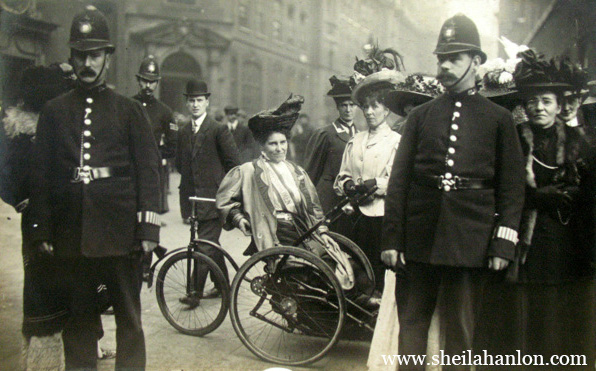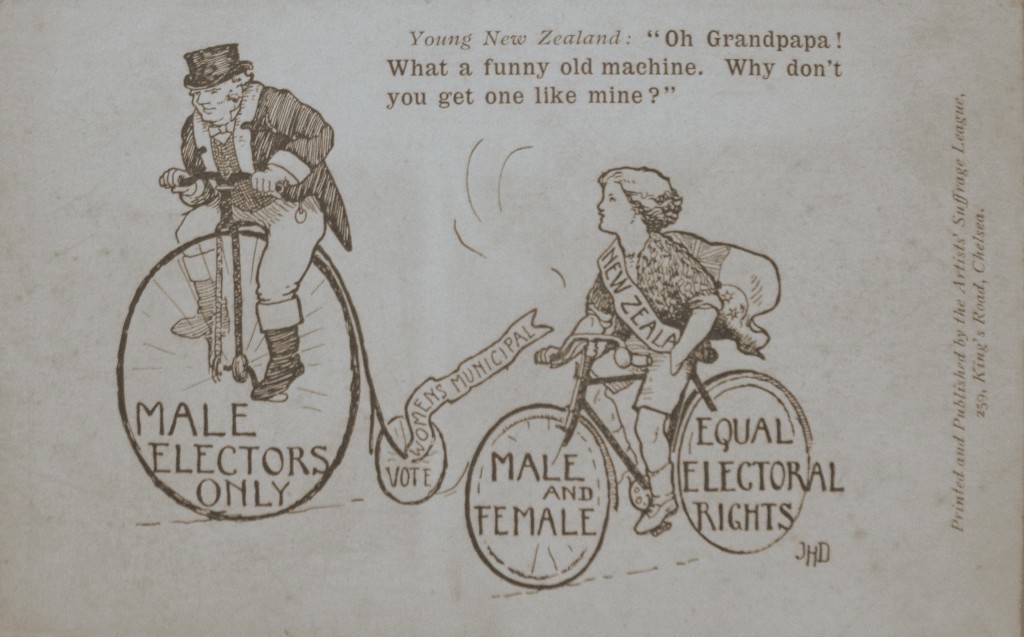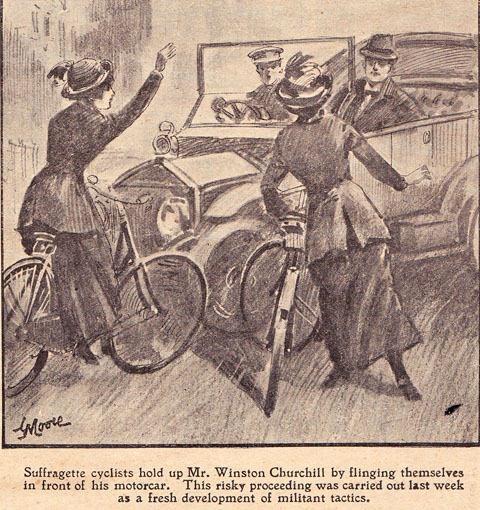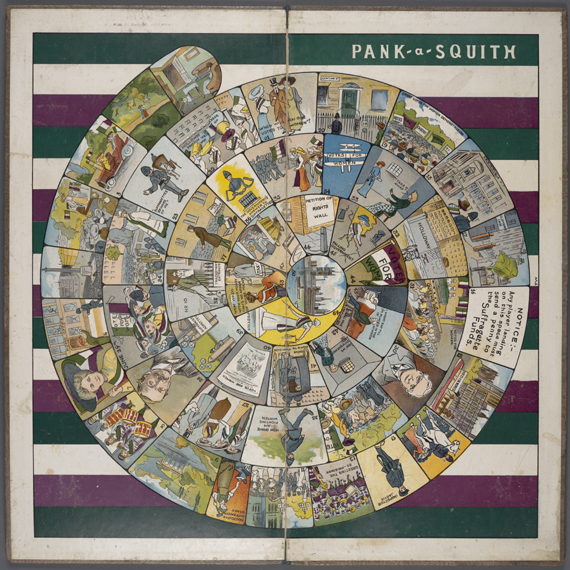
Cycling was one of many forms of leisure integrated into the suffrage campaign. Games, toys and other novelties were produced by a number of organisations to promote the principles of the suffrage movement, announce events, and raise funds.
Pank-a-Squith, the boardgame shown above, was produced by the WSPU as a fundraiser in 1909-1910. It was first advertised in the WSPU’s journal, Votes for Women, on 22 Oct 1909. The game could be ordered by mail or purchased in one of the WSPU’s many “Votes for Women” high-street shops.
The title Pank-a-Squith is a hybrid of the names of WSPU leader Emmeline Pankhurst and her rival in the fight for suffrage, Prime Minister Herbert Asquith.
The game consists of a spiral 50 square track playing board, dice, penny tokens, and suffragette playing pieces. The object is to race from the start at home to the finish at the Houses of Parliament. A die is cast to determine how many spaces each player advances along. Colour illustrations on the playing squares depict scenes from the suffrage movement, such as window smashing and protesters chained to railings in Westminster. Players must be careful to avoid arrest, fines, and force-feeding along the way.
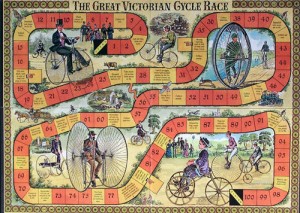
Pank-a-Squith is reminiscent of the pop culture themed boardgames of the Victorian era. A game typical of this genre is The Great Victorian Cycle Race. This bicycle racing game, shown to the right, was produced c.1900. Its artwork documents the evolution of the bicycle, including the dicycle, penny farthing, lady’s tricycle, boneshaker, and the modern Safety.
The game play is like snakes and ladders with a few twists. A die is rolled to move the playing pieces, one of which is a lady tricyclist, along a curvy country road. “Wrong turning” and “Stung by a bee” result in a missed turn. “Chased by dog” allows the player to advance 5 spaces. Items such as a pump, spanner, and lamp are collected along the way to be used later to avoid hazards. With luck on her side, our lady cyclist may well win the race.
Pank-a-Squith and The Great Victorian Cycle Race are good examples of how ephemera can offer insight into the social history of subjects such as cycling and suffrage.
Sources:
“Pank-a-Squith,” boardgame produced by WSPU, 45-x450mm, Museum of London, MOL 50.82/1511, 1909.
“Pank-a-Squith,” image of boardgame, Mary Evans Picture Library, Ref# 10116937, 1909.
“Anyone for a game of Pank-a-Squith?” BBC Radio 4, 28 October 2009,
“The Great Victorian Cycle Race,” boardgame produced in Milton Keynes, Victoria and Albert Museum, c. 1900
“The Great Victorian Bicycle Race” image copy write Anki Toner, www.cyclingboardgames.net
“Pank-a-Squith,” and “The Great Victorian Cycle Race” www.boardgamegeek.com (Accessed 24/2/2011)

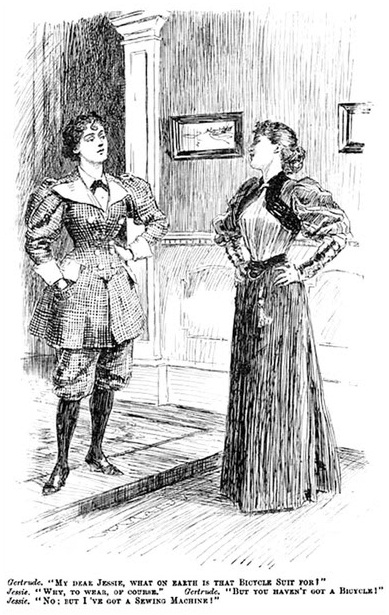
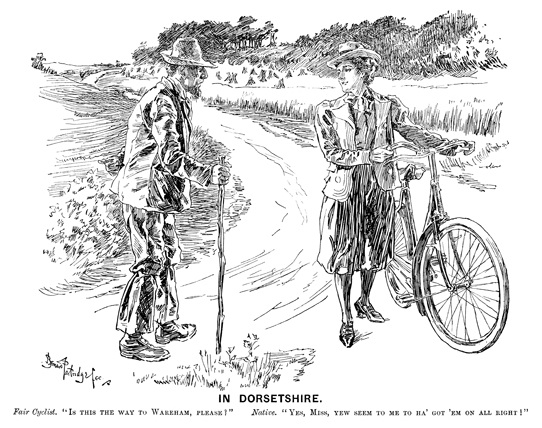
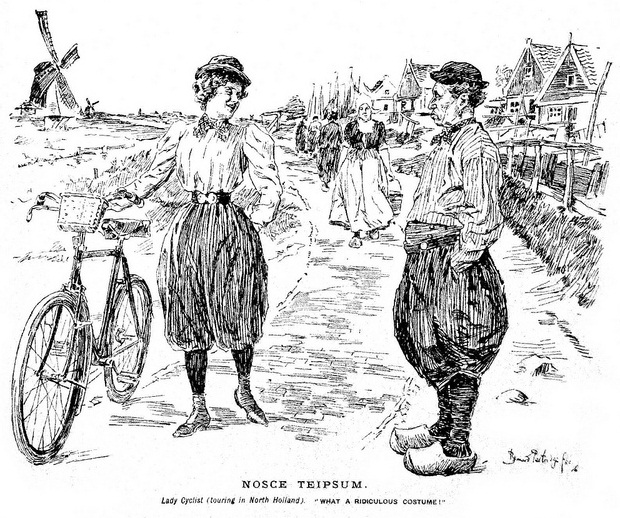
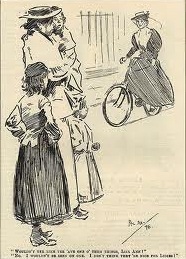
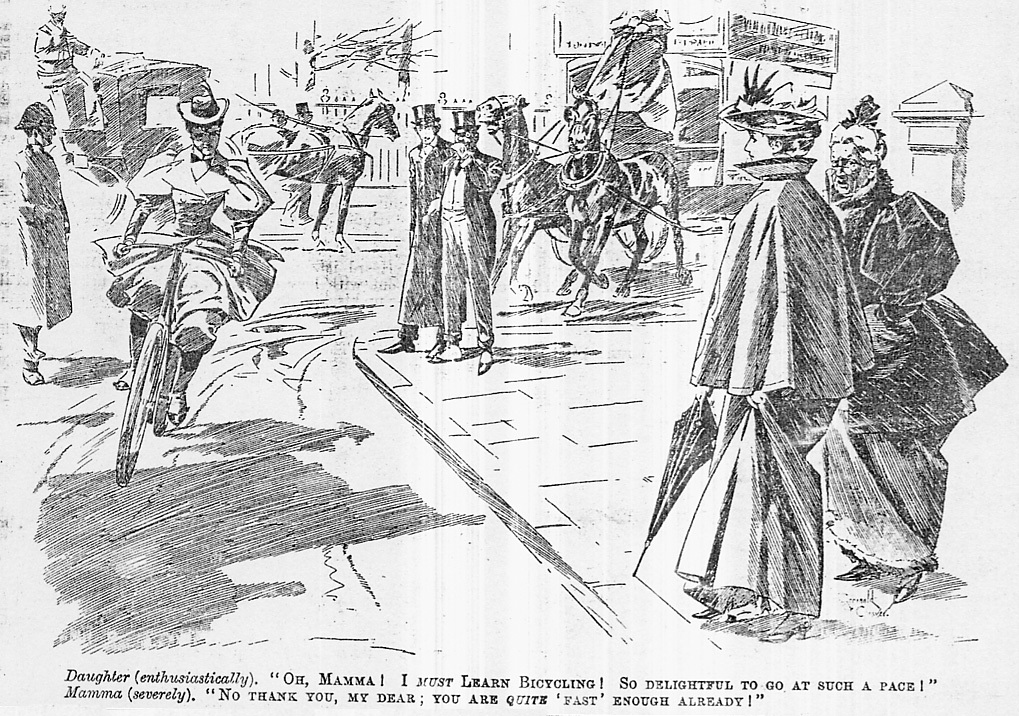
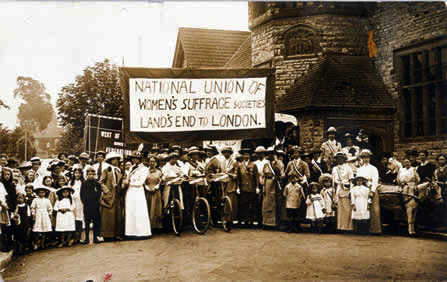
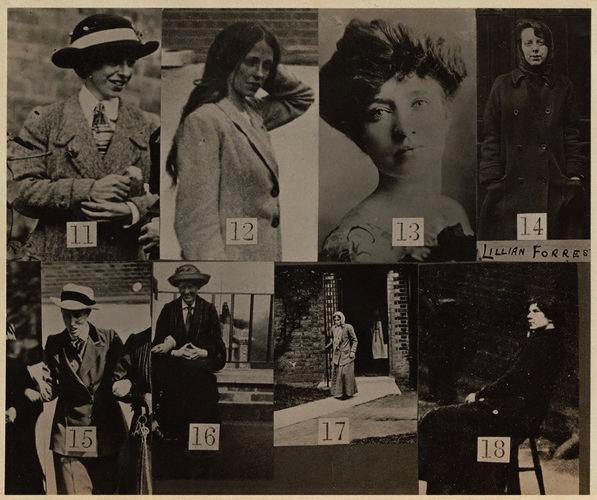
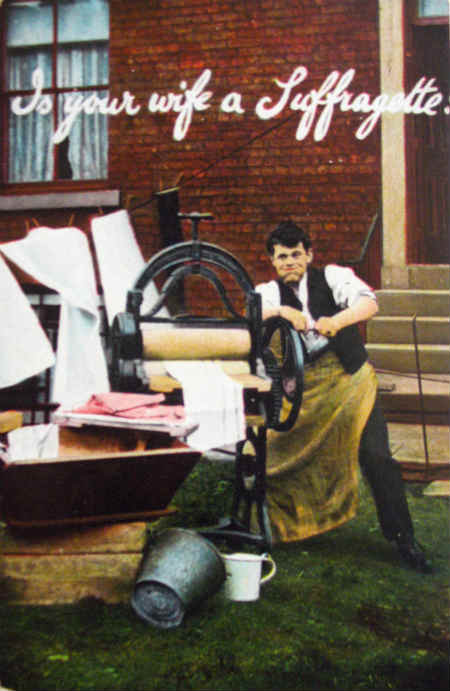 The emasculated husband was a popular subject for picture postcards protesting the consequences of new womanly and suffragette ways.
The emasculated husband was a popular subject for picture postcards protesting the consequences of new womanly and suffragette ways.